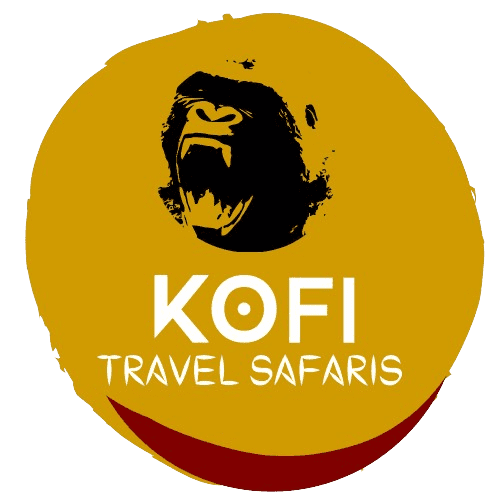Murchison Falls National Park
Located in North western Uganda, Murchison falls national park is the largest national park in Uganda famous for the world’s strongest waterfalls the Murchison falls which flows through a 7meter wide gorge and before it plunges 45 meters with a thunderous roar into the “Devil’s Cauldron”, creating an exquisite rainbow. Formerly Kabalega National Park, the park was gazetted in 1926. The park covers up to 3,893 sq Km extending inland from the Victoria Nile’s edge at Lake Albert up to the Karuma Falls. The Victoria Nile, which spans over 200 kilometers from East to West, cuts the park in half.
Sir Samuel Baker gave the place the name Murchison in honor of geologist Roderick Murchison, then the president of the Royal Geographical Society during his 19th-century explorations of Uganda. Due to its large size, visitors on a Uganda safari tour at Murchison falls have the ability view a number of iconic wildlife species in the park. Plus, the diverse ecosystem the Murchison Park boosts of which include savanna and Borassus palms, riverine woodland, woodland and forest patches. The park is home to more than 76 different mammal species, including the lion, leopard, elephant, and buffalo, four of the “big five” animals.
Other species include giraffes with three-quarters of the world’s population of Rothschild giraffes, Jackson’s hartebeest, waterbucks and warthogs, bushbucks, Uganda kob, hyenas, etc. Hippos and crocodiles are among the many native wildlife that may be seen along the Nile’s shores and in its waters. The Murchison Falls National Park is home to several primates, including baboons and various kinds of monkeys. More than 450 kinds of birds have been reported in the park, including the uncommon shoebill stork, which is especially prominent along the banks of the Nile. Given that it is situated in the western arm of the east African rift valley, the park is also home to 23 Albertine rift endemics.
Game Drives
These early morning and early evening adventures give you the chance to see a variety of creatures up close. A nocturnal game drive gives visitors the chance to witness nocturnal predators including leopards, lions, hyenas, serval cats, and many others. The 2-hour nighttime game drive allows you to witness nocturnal animals in their natural settings. The primary game watching regions in Murchison falls national park include the southern sector, Buligi Peninsular, and the Delta area.
Hot Air Balloon Safari
At dawn, take in an aerial perspective of the park’s stunning scenery and abundant animals. Hot air balloon safaris are only done here in Uganda. Costs for this trip range from $380 to $400.
Boat cruise
During the boat cruise on the Nile, travelers may see wildlife like elephants bathing, crocodiles lazing in the heat and schools of hippos in addition to birds like the shoebill stork and African fish eagle. The Murchison Falls bottom is the destination of the boat cruise.
Bird watching
Featuring a variety of species, including endemic birds of the Albertine Rift, water birds, and savanna woodland birds for example the rare shoe-billed stork, dwarf kingfisher, Goliath heron, white-thighed hornbill and great blue turaco. The rewards for birders will be great. Both the boat cruise and the game drives offer opportunities for bird observation with the help of our expert guides.
Nature Walks & Hikes
The park has a number of routes that may be traveled for example the Sir Samuel Baker trail at the top of the falls and other trails in the park you can trek on foot to observe birds and primates for example in the Rabongo and Kaniyo Pabidi forests.
Cultural Tours
While relaxing by a campfire, take in the exhilarating, energizing cultural dances performed by the Mubako. You may also go on village tours to see the villagers’ way of life and purchase at the Boomu Women’s Group’s craft store.
Rhino trekking
You may make a stop at the Ziwa Rhino sanctuary, one of the big five animals, while traveling to Murchison Falls.
For your accommodation, lodges in Murchison falls park include; Paraa safari lodge, Nile safari lodge, Baker’s lodge, Twiga safari lodge and Pakuba lodge. The mentioned mainly offer luxury accommodation in Murchison falls national park however there several other accommodation options for both budget and mid-range tourists in the park.
Murchison Falls National Park is renowned for its diverse wildlife, housing a remarkable array of animal species. From majestic elephants to elusive leopards, the park offers a captivating safari experience. Here are some of the iconic animals you can encounter in Murchison Falls National Park:
| Name | Species | Description |
|---|---|---|
| Elephant | Loxodonta africana | These gentle giants are the largest land animals on Earth. With their impressive size and distinctive tusks, elephants roam the park in herds, creating a truly awe-inspiring sight. |
| Giraffe | Giraffa camelopardalis | These magnificent creatures, with their long necks and unique spotted patterns, gracefully roam the savannah of Murchison Falls National Park. Observing them as they reach high into the treetops is a sight to behold. |
| Lion | Panthera leo | The king of the savannah, lions can be spotted in Murchison Falls National Park. Known for their majestic manes and powerful roars, these apex predators are a symbol of strength and beauty. |
| Hippo | Hippopotamus amphibius | The Nile River and its tributaries in the park are home to large populations of hippos. These semi-aquatic creatures spend their days lazing in the water and venturing onto land at night to graze. |
| Crocodile | Crocodylus niloticus | With their armored bodies and powerful jaws, Nile crocodiles inhabit the riverbanks and waterways of Murchison Falls National Park. Basking in the sun, these ancient reptiles are a sight to behold. |
| Buffalo | Syncerus caffer | African buffaloes, with their massive horns and robust build, can be found in both grassland and woodland areas of the park. They often move in large herds, grazing on the abundant vegetation. |
| Leopard | Panthera pardus | Known for their elusive nature, leopards are the park’s stealthy felines. Spotting these solitary and agile predators requires a keen eye and a bit of luck, but the reward is witnessing their unmatched beauty. |
| Uganda kob | Kobus kob thomasi | The Uganda kob, a subspecies of the kob antelope, can be seen in Murchison Falls National Park. Males are known for their magnificent curved horns and impressive leaping displays during mating season. |
| Oribi | Ourebia ourebi | The oribi, a small and graceful antelope species, can be found in the grasslands and open savannahs of the park. Their slender build and reddish-brown coat make them blend seamlessly into their surroundings. |
| Warthog | Phacochoerus africanus | Warthogs, with their distinctive facial warts and long, curved tusks, can be spotted in Murchison Falls National Park. These sturdy and resourceful creatures are often seen foraging for food in the savannah. |
Encountering these remarkable animals in their natural habitat is an unforgettable experience that highlights the incredible biodiversity of Murchison Falls National Park.
Birdlife
Murchison Falls National Park is not only a haven for terrestrial wildlife but also a paradise for bird enthusiasts. The park boasts a rich avian diversity, with over 450 bird species recorded within its boundaries. Here are some notable bird species that you may encounter during your visit to Murchison Falls National Park:
| Name | Species | Description |
|---|---|---|
| Shoebill stork | Balaeniceps rex | The iconic shoebill stork is a must-see bird in Murchison Falls National Park. With its distinctive shoe-shaped bill and towering height, it is considered one of the most sought-after bird species in Africa. |
| Goliath heron | Ardea goliath | As one of the largest herons in the world, the Goliath heron is an impressive sight. Its tall stature, gray plumage, and slow, deliberate movements make it a captivating bird to observe along the park’s waterways. |
| African fish eagle | Haliaeetus vocifer | The African fish eagle, with its striking brown and white plumage and piercing call, is often regarded as the “voice of Africa.” This majestic raptor can be seen perched high in the trees, scanning the water for its next meal. |
| Abyssinian ground hornbill | Bucorvus abyssinicus | The Abyssinian ground hornbill is a large, ground-dwelling bird known for its deep booming calls and striking appearance. Its jet-black feathers and bright red throat patch make it a captivating sight as it moves across the savannah. |
| Grey crowned crane | Balearica regulorum | The grey crowned crane, Uganda’s national bird, can be found in Murchison Falls National Park. With its elegant gray plumage, golden crown of feathers, and graceful dance displays, this bird is a true symbol of beauty and grace. |
These are just a few examples of the incredible birdlife you may encounter during your exploration of Murchison Falls National Park. From raptors soaring through the skies to vibrant and melodious songbirds, the park offers a diverse and captivating birdwatching experience.
Conservation and Challenges ✨
Murchison Falls National Park serves not only as a stunning natural wonder but also as a crucial conservation area dedicated to preserving its diverse ecosystem and protecting its wildlife. Conservation efforts play a vital role in ensuring the long-term survival of the park and its inhabitants. However, Murchison Falls National Park faces several challenges that require ongoing attention and collective efforts. Let’s explore the conservation initiatives and the challenges faced by the park:
Conservation Initiatives:
- Anti-Poaching Efforts: The park authorities have implemented rigorous anti-poaching measures to combat illegal hunting and protect endangered species. This includes increasing ranger patrols, utilizing modern surveillance technologies, and collaborating with local communities to raise awareness about the importance of wildlife conservation.
- Community Engagement: Engaging local communities living around the park is crucial for sustainable conservation. Collaborative initiatives, such as community-based tourism projects and revenue-sharing schemes, help create incentives for local communities to actively participate in conservation efforts and reduce human-wildlife conflicts.
- Habitat Restoration: Efforts are underway to restore and protect habitats within the park, including reforestation projects, wetland conservation, and the management of invasive plant species. By preserving these habitats, the park can support a healthy ecosystem for its wildlife.
Challenges:
- Poaching: Despite conservation efforts, poaching remains a significant threat to the park’s wildlife. The illegal trade in ivory, bushmeat, and other animal products poses a constant challenge to wildlife protection. Continued efforts are needed to strengthen anti-poaching measures and combat this illegal activity.
- Human-Wildlife Conflict: As human populations expand around the park, conflicts between wildlife and communities can arise. Crop raiding by elephants and other animals can lead to negative attitudes towards wildlife conservation. Implementing sustainable solutions to minimize such conflicts, such as the use of deterrents and compensation programs, is crucial for peaceful coexistence.
- Climate Change: The impacts of climate change, including droughts, changing rainfall patterns, and habitat degradation, pose challenges to the park’s biodiversity. Monitoring and mitigating these effects are essential to ensure the long-term resilience of the ecosystem.
- Tourism Pressure: While tourism provides economic benefits and supports conservation efforts, it also places pressure on the park’s resources and wildlife. Sustainable tourism practices, including responsible visitor behavior, controlled visitor numbers, and proper infrastructure development, are necessary to minimize negative impacts.
By addressing these challenges and implementing effective conservation strategies, Murchison Falls National Park can continue to safeguard its rich biodiversity and provide a home for its iconic wildlife.
Travel Tips and Practical Information ✨
Planning a visit to Murchison Falls National Park? Here are some essential travel tips and practical information to help you make the most of your experience:
Getting to Murchison Falls National Park:
- By Air: The nearest major airport is Entebbe International Airport, located near the capital city of Kampala. From there, you can take a domestic flight to Pakuba Airstrip, which is within the park.
- By Road: The park can also be reached by road from Kampala, with a driving distance of approximately 5-6 hours. It is recommended to hire a reliable 4×4 vehicle for the journey, as some sections of the road may be rough.
Best Time to Visit:
- The dry seasons, from December to February and June to September, are generally considered the best times to visit Murchison Falls National Park. During these months, wildlife viewing is excellent, and the weather is pleasant.
- Note that the park can become crowded during peak tourist seasons, so it’s advisable to book accommodations and activities in advance.
Accommodation Options:
- Murchison Falls National Park offers various accommodation options to suit different preferences and budgets. These include lodges, tented camps, and campsites located within and near the park.
- Some popular accommodation choices include Paraa Safari Lodge, Chobe Safari Lodge, Bakers Lodge, and Red Chilli Rest Camp. These establishments provide comfortable amenities and stunning views of the park and its surroundings.
Park Rules and Regulations:
- Follow the instructions of your safari guide and park rangers at all times.
- Respect the wildlife and maintain a safe distance from animals. Do not feed or provoke them.
- Stay on designated trails and roads to minimize habitat disturbance.
- Do not litter. Keep the park clean by disposing of waste properly.
- Observe the park’s opening and closing hours. Overnight stays in the park require prior arrangements.
Recommended Activities:
- Game Drives: Embark on thrilling game drives to explore the park’s vast savannah plains and spot a variety of wildlife, including elephants, giraffes, lions, and more.
- Boat Safaris: Take a boat safari along the Nile River to witness hippos, crocodiles, and a wealth of birdlife. The boat trip also offers an opportunity to view Murchison Falls from a unique perspective.
- Hiking to Murchison Falls: Experience the power and beauty of the falls up close by hiking to the top. The trail offers breathtaking views and a chance to see the Nile River’s dramatic plunge.
- Chimpanzee Tracking: Adjacent to the park is Budongo Forest Reserve, home to a population of chimpanzees. Consider adding a chimpanzee tracking experience to your itinerary for an unforgettable encounter with these primates.
Remember to pack essentials such as sunscreen, insect repellent, comfortable clothing, sturdy shoes, and a good camera to capture the incredible moments.
✨ In Conclusion ✨ Murchison Falls National Park beckons with its remarkable wildlife, stunning landscapes, and incredible experiences. By following these travel tips and respecting the park’s rules, you can contribute to the preservation of this natural treasure and create memories that will last a lifetime.


